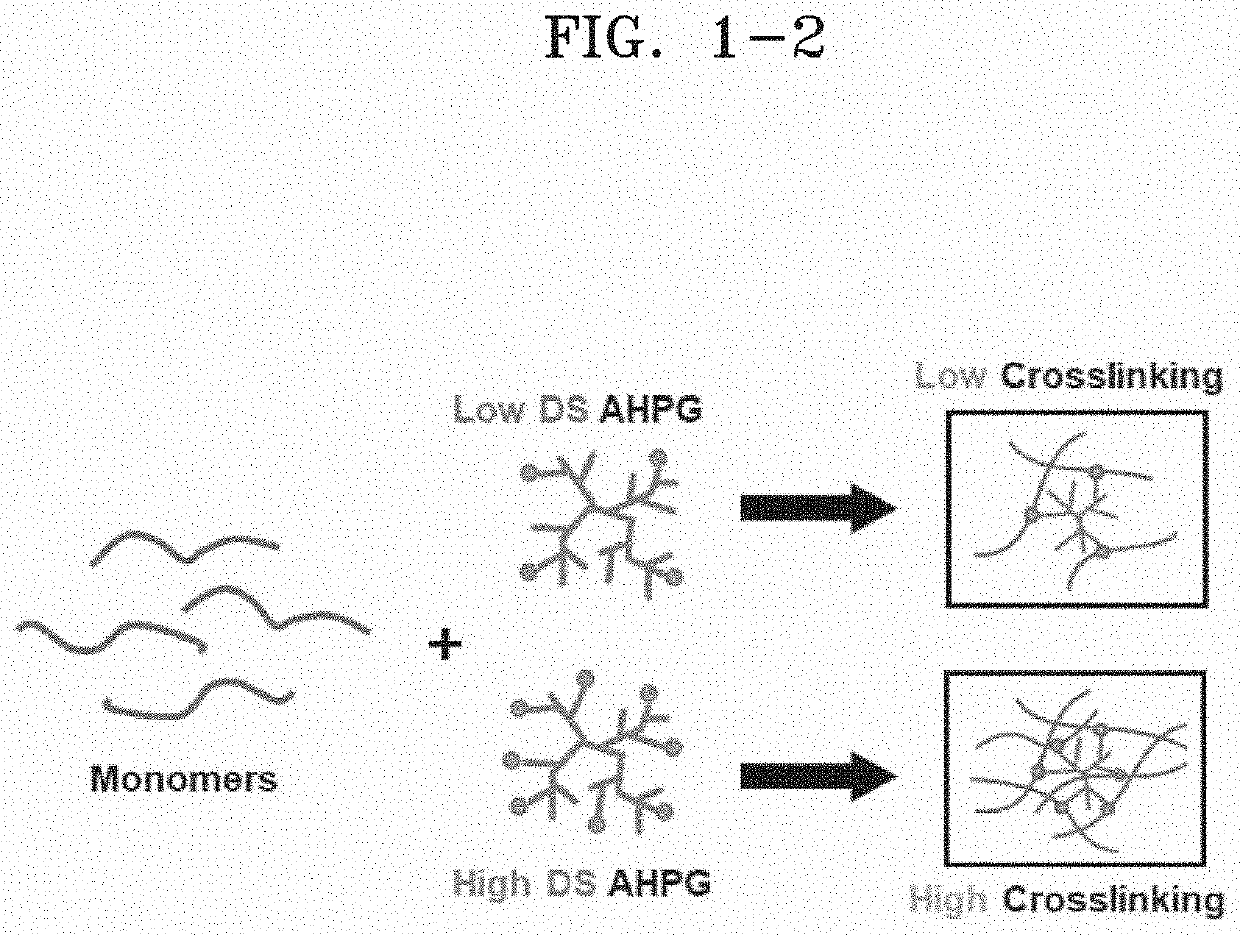Ink composition for bioprinting and hydrogel formed from the same
a bioprinting and hydrogel technology, applied in the direction of inks, apparatus sterilization, prosthesis, etc., can solve the problems of inability to control the material properties of sensitive biological entities, and not suitable for tissue engineering and drug delivery applications,
- Summary
- Abstract
- Description
- Claims
- Application Information
AI Technical Summary
Benefits of technology
Problems solved by technology
Method used
Image
Examples
examples
[0098]Synthesis of AHPG
[0099]Trimethylol propane (TMP, 2 mmol, Sigma Aldrich) as the initiator was first activated by reaction with sodium hydride (0.5 mmol, 60% suspension in mineral oil, Sigma Aldrich) in dry diglyme (0.6 mL, Sigma Aldrich), to deprotonate the hydroxyl groups resulting in alkoxide formation. The hydroxyl groups in TMP were partially deprotonated in order to lower the polydispersity and prevent unwanted cyclization. Into this activated initiator, glycidol (Sigma Aldrich) as the monomer was slowly added via an electronic syringe pump (KDS Legato 100, KD Scientific) over 12 hours, and continuously stirred at 95° C. The mixture was further reacted at 95° C. for additional 3 hours after completing the monomer addition. Then, the mixture was cooled to 50° C. and hydrochloric acid (5 mmol) dissolved in 20 mL methanol (Samchun Chemicals, Korea) was added to quench the reaction. The crude product was obtained by three rounds of precipitation and washing in diethyl ether. H...
PUM
| Property | Measurement | Unit |
|---|---|---|
| molecular weight | aaaaa | aaaaa |
| molecular weight | aaaaa | aaaaa |
| molecular weight | aaaaa | aaaaa |
Abstract
Description
Claims
Application Information
 Login to View More
Login to View More - R&D
- Intellectual Property
- Life Sciences
- Materials
- Tech Scout
- Unparalleled Data Quality
- Higher Quality Content
- 60% Fewer Hallucinations
Browse by: Latest US Patents, China's latest patents, Technical Efficacy Thesaurus, Application Domain, Technology Topic, Popular Technical Reports.
© 2025 PatSnap. All rights reserved.Legal|Privacy policy|Modern Slavery Act Transparency Statement|Sitemap|About US| Contact US: help@patsnap.com



